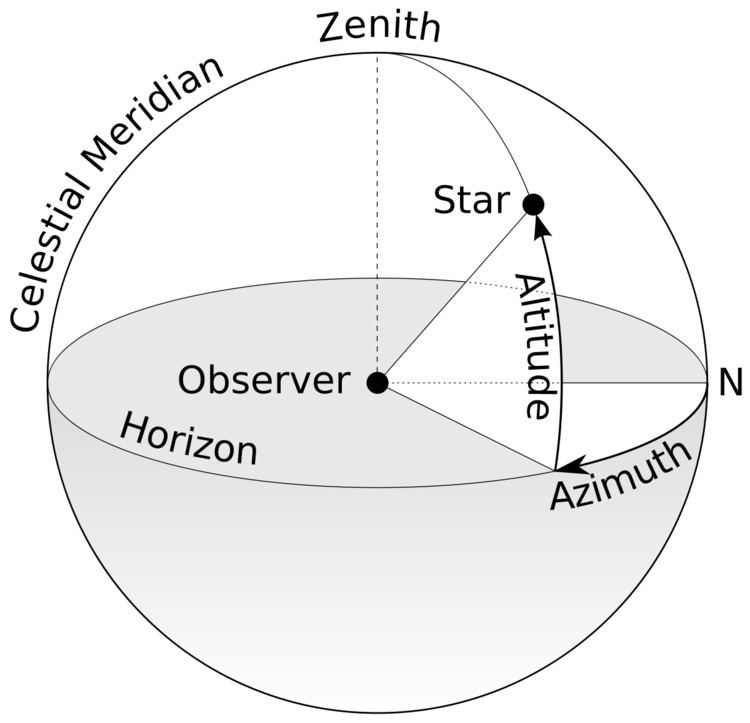 | ||
The horizontal coordinate system is a celestial coordinate system that uses the observer's local horizon as the fundamental plane. It is expressed in terms of altitude (or elevation) angle and azimuth.
Contents
Definition
This coordinate system divides the sky into the upper hemisphere where objects are visible, and the lower hemisphere where objects cannot be seen since the Earth obstructs vision. The great circle separating the hemispheres is called the celestial horizon. The celestial horizon is defined as the great circle on the celestial sphere whose plane is normal to the local gravity vector. In practice, the horizon can be defined as the plane tangent to a still liquid surface such as a pool of mercury. The pole of the upper hemisphere is called the zenith. The pole of the lower hemisphere is called the nadir.
There are two independent horizontal angular coordinates:
The horizontal coordinate system is sometimes also called the az/el system, the Alt/Az system, or the altazimuth system, from the name of the altazimuth mount for telescopes, whose two axes follow altitude and azimuth.
Calculation
More details on the computation of azimuth and zenith angle can be found at Solar azimuth angle and Solar zenith angle.
General observations
The horizontal coordinate system is fixed to the Earth, not the stars. Therefore, the altitude and azimuth of an object in the sky changes with time, as the object appears to drift across the sky with the rotation of the Earth. In addition, because the horizontal system is defined by the observer's local horizon, the same object viewed from different locations on Earth at the same time will have different values of altitude and azimuth.
Horizontal coordinates are very useful for determining the rise and set times of an object in the sky. When an object's altitude is 0°, it is on the horizon. If at that moment its altitude is increasing, it is rising, but if its altitude is decreasing, it is setting. However, all objects on the celestial sphere are subject to diurnal motion, which is always from east to west. One can determine whether altitude is increasing or decreasing by instead considering the azimuth of the celestial object:
There are the following special cases:
Note that the above considerations are strictly speaking true for the geometric horizon only. That is, the horizon as it would appear for an observer at sea level on a perfectly smooth Earth without an atmosphere. In practice the apparent horizon has a slight negative altitude due to the curvature of the Earth, the value of which gets more negative as the observer ascends higher above sea level. In addition, atmospheric refraction causes celestial objects very close to the horizon to appear about half a degree higher than they would if there were no atmosphere.
